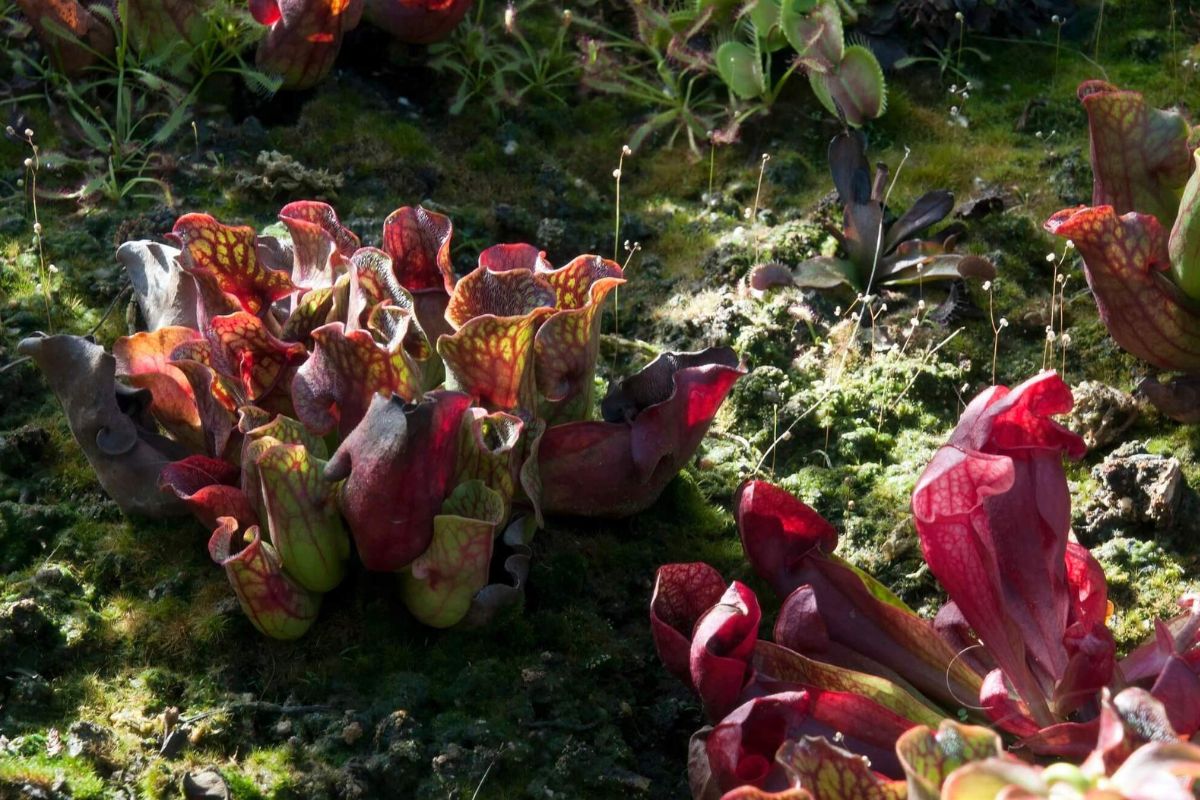Mystery Of The Hooded Pitcher Plant Hollows In Bog Gardens

Have you ever wondered about the mystery of the hooded pitcher plant hollows in bog gardens? These unique plants, with their striking appearance and fascinating adaptations, captivate nature enthusiasts and curious minds alike. Found in nutrient-poor, acidic wetlands, hooded pitcher plants have evolved to thrive in challenging environments. Their hollow, tubular leaves act as natural traps, luring insects inside with nectar and then digesting them for nutrients. This intriguing survival strategy not only helps the plants flourish but also adds a touch of wonder to bog gardens. Join us as we delve into the world of these remarkable plants and uncover the secrets behind their hollow traps.
What is a Hooded Pitcher Plant?
The Hooded Pitcher Plant is a fascinating carnivorous plant found in bog gardens. Known for its unique shape and ability to trap insects, it thrives in nutrient-poor environments. Let's explore some of the best places to see these intriguing plants.
Where to Find Hooded Pitcher Plants in Bog Gardens
Bog gardens provide the perfect habitat for Hooded Pitcher Plants. Here are some top spots where you can witness these plants in their natural environment.
Okefenokee Swamp, Georgia
- This vast swamp is home to a variety of carnivorous plants, including the Hooded Pitcher Plant. The swamp's acidic waters and nutrient-poor soil create ideal conditions for these plants to thrive.
Francis Marion National Forest, South Carolina
- Known for its diverse plant life, this forest offers a great opportunity to see Hooded Pitcher Plants. The boggy areas within the forest are perfect for these unique plants.
Apalachicola National Forest, Florida
- This forest is a hotspot for carnivorous plants. The Hooded Pitcher Plant can be found in the wetland areas, where it captures insects to supplement its nutrient intake.
Unique Features of Hooded Pitcher Plants
Hooded Pitcher Plants have several distinctive features that make them stand out. Understanding these features can enhance your appreciation of these remarkable plants.
Shape and Structure
The plant's hooded shape helps it trap insects efficiently. The hood prevents rainwater from diluting the digestive enzymes inside the pitcher, ensuring the plant gets the nutrients it needs.
Coloration
Bright colors and nectar attract insects to the plant. Once inside, the slippery walls and downward-pointing hairs make escape nearly impossible for the prey.
Conservation Efforts
Protecting the habitats of Hooded Pitcher Plants is crucial for their survival. Various conservation efforts are in place to ensure these plants continue to thrive.
Habitat Preservation
Organizations work to preserve bog gardens and wetlands, which are essential for the survival of Hooded Pitcher Plants. Efforts include protecting existing habitats and restoring degraded ones.
Public Awareness
Raising awareness about the importance of these plants helps garner support for conservation efforts. Educational programs and guided tours in bog gardens can help people understand the significance of preserving these unique ecosystems.
How to Grow Hooded Pitcher Plants at Home
Interested in growing your own Hooded Pitcher Plant? Here are some tips to get you started.
Choosing the Right Soil
Use a mix of sphagnum moss and sand to mimic the plant's natural habitat. Avoid using regular potting soil, as it contains too many nutrients.
Watering
Keep the soil consistently moist but not waterlogged. Use distilled or rainwater to avoid introducing minerals that can harm the plant.
Light Requirements
Provide plenty of sunlight, but avoid direct midday sun. A bright, indirect light source works best for these plants.
Fascinating Facts About Hooded Pitcher Plants
These plants are full of surprises. Here are some interesting facts that highlight their unique characteristics.
Insect Diet
Hooded Pitcher Plants primarily feed on insects, but they have been known to capture small frogs and even mice on rare occasions.
Lifespan
These plants can live for several years, with some species surviving up to 20 years in the right conditions.
Evolution
Hooded Pitcher Plants have evolved over millions of years to become efficient insect traps. Their unique adaptations make them one of nature's most fascinating carnivorous plants.
Conclusion
Hooded Pitcher Plants are not just captivating to look at; they play a crucial role in their ecosystems. Whether you're visiting a bog garden or growing one at home, these plants offer a glimpse into the wonders of nature.
The Enigma of Hooded Pitcher Plant Hollows
Hooded pitcher plants are fascinating. Their unique hollows add to their mystery. These plants thrive in bog gardens, creating a special ecosystem. The hollows serve as traps for insects, helping the plants get nutrients. This adaptation is crucial for their survival in nutrient-poor environments.
Understanding these plants can help in conservation efforts. Protecting bog gardens ensures these plants continue to thrive. Next time you visit a bog garden, take a closer look at the hooded pitcher plants. Their hollows tell a story of survival and adaptation.
These plants are more than just beautiful; they are a testament to nature's ingenuity. By appreciating and protecting them, we contribute to preserving biodiversity. Hooded pitcher plants remind us of the delicate balance in nature. Let's cherish and protect these unique plants for future generations.

